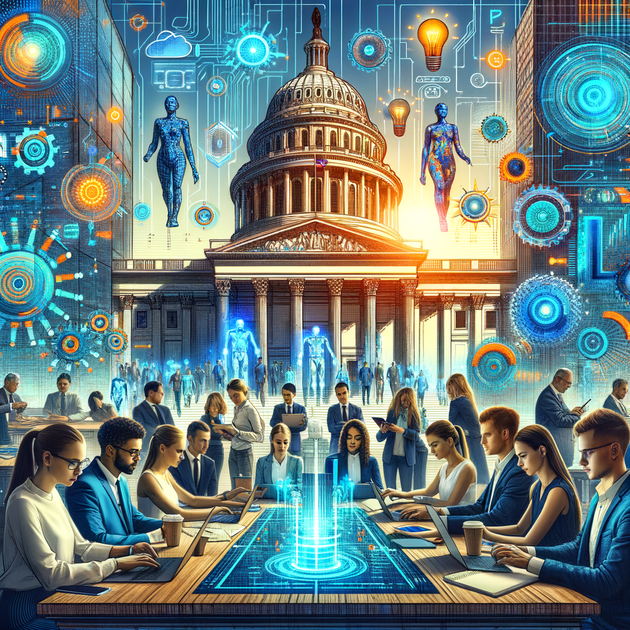How Digital Natives Are Transforming Government AI Teams: A New Era of Innovation and Service
By AI Trends Editor
The landscape of Artificial Intelligence (AI) has been revolutionized not just by technological advancements, but by the unique mindsets of digital natives entering the workforce. These young professionals have grown up surrounded by technology, shaping their expectations and approaches in a way that is beginning to profoundly influence government AI engineering teams.
The Digital Native Advantage
For digital natives, AI isn’t a futuristic concept; it’s a familiar tool integrated into their daily lives. They’ve grown up with Alexa and self-driving cars, positioning them ideally to push the boundaries of what AI can achieve in a governmental setting.
In a recent panel discussion at AI World Government, experts delved into the intricate relationship between digital natives and their contributions to AI engineering teams.
Bridging Technology and Cultural Maturity

Dorothy Aronson, CIO and Chief Data Officer at the National Science Foundation, highlights that while AI technology is increasingly accessible, the cultural readiness to leverage it fully is still catching up. “It’s like giving a sharp object to a child. We might have access to big data, but it might not be the right thing to do,” she remarked.
Government AI: Unique Challenges and Opportunities

Rachel Dzombak of the Software Engineering Institute at Carnegie Mellon University moderated the discussion, focusing on what sets government AI projects apart. Aronson pointed out that the government cannot afford to get too far ahead with technology, as user comprehension and interaction become critical issues.
“We’re not building iPhones,” Aronson emphasized. “We are always looking ahead, anticipating the future, so we can make the most cost-effective decisions.”
The Appeal and Challenges of Government Work
Despite its critical societal role, government work often has a reputation among younger generations as restrictive. Aronson suggested this perception is far from reality. “People who work for the government are dedicated to solving really big problems of equity, diversity, and safety,” she noted.
Vivek Rao from UC Berkeley illustrated the impact of this realization on his students. After participating in a course on innovation in disaster response, developed in collaboration with entities like the Department of Defense, students transitioned from seeing government roles as unattractive to considering them seriously. One student even joined the Naval Surface Warfare Center as a software engineer.
Building Resilient AI Teams

Bryan Lane, director of Data & AI at the General Services Administration, emphasized the importance of resilience in AI teams. “The most important thing about resilient teams going on an AI journey is that you need to be ready for the unexpected, and the mission persists,” he said.
Psychological Safety and Innovation
Lane sees it as a positive sign when team members acknowledge, “I’ve never done this before.” This creates an environment where discussing risks and exploring alternative solutions becomes the norm. “When your team has the psychological safety to say that they don’t know something, it’s an opportunity to grow,” he noted.
Experimentation and Community Building
Both Aronson and Lane agree that building effective AI teams is more about the people than the tools. Communities of practice and cross-functional teams are beneficial for collaborative problem-solving. “You bring people together around a problem and not a tool,” Aronson explained.
The Road Ahead: Proven Methods and Best Practices
Lane envisions that it will take about five years to establish proven methods and best practices for AI in government. Efforts like the Opportunity Project by the US Census Bureau are paving the way, addressing issues from ocean plastic pollution to disaster response.
“We need to scale the model of delivery, but in five years, we will have enough proof of concept to know what works and what does not,” Lane said optimistically.
Engage and Reflect
As we navigate this dynamic field, the role of digital natives in shaping government AI initiatives cannot be overstated. Their familiarity with technology, coupled with a service-oriented mindset, presents a unique advantage. But it’s not without challenges—striking the right balance between cutting-edge technology and practical application remains crucial.
What Do You Think? How can we further harness the potential of digital natives in government AI projects? Share your thoughts and experiences in the comments below!
